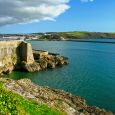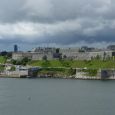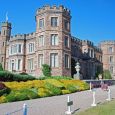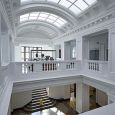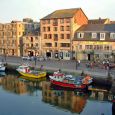Plymouth
Advertisement
By Air
Plymouth Airport is conveniently located close to the city and buses and taxis are available for the short transfer to the city centre. The airport has flights to major cities in the UK including Bristol, Leeds, London and Manchester.
By Train
Plymouth is on a main line rail route connecting to Bristol, London and the North of England. Frequent trains run from London's Paddington Station to Plymouth in approximately four hours. Trains also continue on to Penzance in Cornwall.
By Bus
National Express run coaches from all over the country to the Bretonside Bus Station in Plymouth. It is one of the most cost effective and reliable ways of travelling to the South West. There are regular daily services from Victoria Coach Station in London departing early morning, early afternoon and evening.
By Car
English roads are generally very well maintained and have good signposts. Reaching Plymouth by car is relatively straightforward as the road system connects with all of the large cities. From west or east of the country take the M4 motorway to Bristol and continue until you reach Exeter (90 miles from Bristol). From there, take the A380 dual carriageway to Plymouth.
Advertisement
Plymouth Hoe
The Hoe is one of the most popular spots in Plymouth with its outstanding views of Plymouth Sound, Drake's Island and across the Hamoaze to Mount Edgcumbe in Cornwall. It is probably best known as the place that Sir Francis Drake played his famous game of bowls in 1588, just prior to boarding his fleet and defeating the Spanish Armada. A statue of Drake is erected on the Hoe in his honour. The other prominent visible landmark is Smeaton's Tower, a large lighthouse that was originally sited on the Eddystone Rocks and then re-erected on land in the late 1880s. Visitors can climb the 93 steps and enjoy the wonderful panoramic views over the city and beyond.
Mount Edgcumbe House and Country Park
Just across the river at Torpoint lies the former home of Mount Edgcumbe. The House was built in 1547 and has been beautifully restored to the 18th century style. Mount Edgcumbe is rare among the English country houses because of its post-War interior design and neo-Georgian style. The Drawing room, overlooking the 19th century garden, has a Boulle desk, a portrait of the 2nd Lord Edgcumbe by Reynolds and two Van de Velde seascapes. Some of the exhibits include paintings by Gerard Edema, William van der Velde and Sir Joshua Reynolds. The Mount Edgecumbe Estate, which is almost surrounded by coastline, covers more than 800 acres. The grounds have eccentric features such as temples, forts, follies and a unique shell seat that was laid during the 18th century. Close to the house is the formal mid 19th Century Earl's Garden which has terraces, lawns and shrubberies laid out in exotic styles from all round the world.
Royal Citadel
Built following the English Civil War, this was England's principal fortress and features some outstanding examples of 17th century baroque architecture. It was located on the earlier Plymouth Fort as a defence against a threatened Dutch invasion. It has been regularly strengthened over the years, particularly during the 1750s when it was equipped with 113 guns making it a formidable fortification. On the south east corner you can see the Fisher's Nose Blockhouse which dates from 1490-1540. On the opposite bank is Queen Anne's Battery dating from 1667. Within its ramparts is a spacious parade ground, barracks for over 300 men and a collection of historic guns. Most of the stone used to build the Citadel was taken from a quarry at West Hoe Park. In recent years, the Citadel has been home to the Royal Marine Commandos, a specialist Army unit.
Barbican
In the narrow streets of the historic quarter of Plymouth, "The Barbican", the visitor can see an excellent example of 16th century architecture in the Elizabethan House on New Street, which has been fitted out exactly as it would have been in Tudor times. In Southside Street the remains of a 14th century Dominican monastery can still be seen.
City Museum and Art Gallery
The City Museum is situated in Drake Circus Centre; its exhibits include works of old masters, paintings by Sir Joshua Reynolds, a valuable collection of porcelain and silver, Italian bronze objects and the goblet which Sir Francis Drake was given by Elizabeth I on his return from his three-year voyage around the world.
Information not available
January - February -> 4(°C) - Winter
July - August -> 19(°C) - Summer
Advertisement

